Introduction
How Big Can Guinea Pigs Get: The intriguing world of guinea pigs and their sizes, one might wonder just how big these charming rodents can grow. Guinea pigs, scientifically known as Cavia porcellus, are beloved pets renowned for their endearing personalities and gentle nature. These furry creatures have been cherished companions to humans for centuries, originating from the Andes region of South America.
The fascinating dimensions of guinea pigs, from their typical size and weight to the remarkable variations that exist among different breeds and individuals. Whether you’re a seasoned guinea pig owner or someone considering these delightful pets for the first time, appropriate care and accommodations need to thrive. Understanding the typical size range of guinea pigs and how various factors can influence their size is essential for responsible guinea pig ownership.
A journey to discover just how big guinea pigs can get and unravel the unique characteristics that make them such beloved members of the pet kingdom. The environment in which guinea pigs are raised can also impact their size. A clean, spacious cage or enclosure with room to exercise can contribute to their overall well-being and growth. Providing the right care, nutrition, and environment will ensure that these charming rodents can reach their full potential in terms of size and, more importantly, enjoy a happy and healthy life as cherished pets.
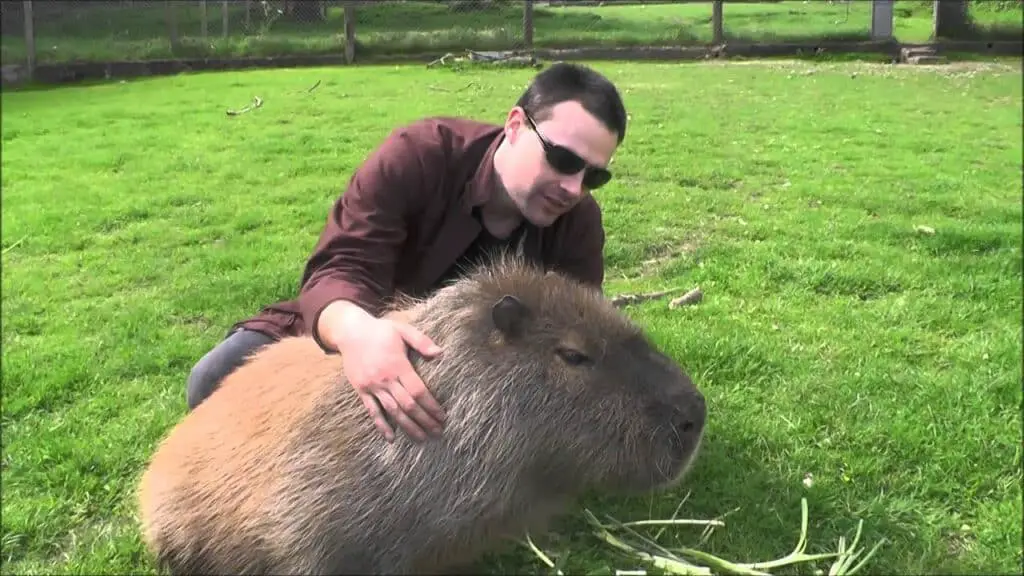
How big is the biggest guinea pig?
The Rex is by far the largest breed of all the guinea pigs out there, measuring in at a rather impressive 43 cm or 17 inches long as an adult. Keeping in mind that the average breed is between 10 and 12 inches, this means the Rex is almost one and a half times bigger than other guinea pig breeds.
The largest breed of guinea pig, the Rex, can grow to be quite impressive in size. As adults, they can measure up to 17 inches (43 centimeters) in length. This is significantly larger than the average guinea pig, which typically ranges between 10 to 12 inches in length.
The Rex guinea pig is known for its larger stature, making it almost one and a half times bigger than many other guinea pig breeds. However, it’s essential to note that the size of guinea pigs can also vary within breeds and among individuals. Factors such as genetics, nutrition, and overall care can influence their growth and size.
Regardless of their size, guinea pigs are cherished pets known for their friendly and endearing personalities.Just like humans, guinea pigs can vary in size even within the same breed. Some individuals may naturally be larger or smaller than the typical size for their breed.
Remember that providing proper care, a balanced diet, and a comfortable living environment are essential to ensuring that your guinea pig reaches and maintains a healthy size. Whether big or small, guinea pigs are cherished pets known for their lovable nature and unique charm.
Which is the bigger rabbit or guinea pig?
Even a dwarf rabbit will typically reach 3 or 4 pounds which most breeds weigh around 5 or 6 pounds when they are full grown. There are even some giant breeds of rabbits that can reach 10 pounds or even more! In contrast, guinea pigs are much smaller.
Rabbits: Even the smallest rabbit breeds, such as dwarf rabbits, can typically reach a weight of 3 to 4 pounds when they are fully grown. Most standard rabbit breeds weigh around 5 to 6 pounds at maturity. Additionally, some giant rabbit breeds can reach sizes of 10 pounds or even more. Rabbits are known for their long ears and elongated bodies.
Guinea Pigs: Guinea pigs, on the other hand, are much smaller in size compared to rabbits. The average adult guinea pig typically weighs between 1.5 to 2.5 pounds, making them significantly lighter and shorter in length compared to rabbits. Guinea pigs have a more compact and rounder body shape.
Both rabbits and guinea pigs make wonderful pets, but their size and physical characteristics differ, and they have unique care requirements. It’s important to choose a pet that fits your lifestyle and preferences, whether you’re drawn to the larger and more active nature of rabbits or the smaller and sociable disposition of guinea pigs.
Are guinea pigs friendly?
What’s more, tame piggies don’t just tolerate attention – they love it! Guinea pigs are really social, and they like to be stroked, cuddled and hand-fed. Since they’re so friendly, guinea pigs can make great companions for children.
Yes, guinea pigs are known for their friendly and sociable nature. They make excellent family pets due to their amiable personalities and ease of taming. Here are some reasons why guinea pigs are considered friendly and great companions:
Social Creatures: Guinea pigs are highly social animals that thrive on interaction and companionship, both with their fellow guinea pigs and with humans.
Easy to Tame: Guinea pigs are generally easy to tame, and they can quickly form bonds with their human caregivers. With patience and gentle handling, they become comfortable with being touched, held, and cuddled.
Affectionate: Tame guinea pigs often enjoy being stroked, cuddled, and hand-fed by their owners. They appreciate the attention and affection they receive from their human companions.
Gentle Demeanor: Guinea pigs are known for their gentle and docile temperament. They are less likely to bite or scratch compared to some other small pets, making them well-suited for families, including children.
Vocal and Expressive: Guinea pigs communicate with a variety of vocalizations, which can be endearing and entertaining. They “wheek” in excitement, purr when content, and may even “popcorn” (jump and twist in the air) when they are particularly happy.
Adaptability: Guinea pigs adapt well to indoor environments and can comfortably live in a cage or enclosure within your home. This makes them accessible and easy to care for as pets.
Low Maintenance: While guinea pigs do require proper care, their needs are manageable, making them a suitable choice for families looking for a low-maintenance pet.
Overall, guinea pigs’ friendly and affectionate nature, combined with their manageable size and sociable behavior, make them wonderful additions to family households. They enjoy interacting with their human caregivers and can form strong bonds, providing companionship and entertainment for both children and adults.
Is A guinea pig considered a rat?
Guinea Pig Facts That May Surprise You Vetstreet Vetstreet Interestingly, they are not related to pigs pot bellied or otherwise. Also known as cavies (pronounced KAY-vees), guinea pigs are the domesticated counterparts of wild guinea pigs from South America. Guinea pigs are rodents, more closely related to chinchillas than to rats or mice.
Guinea pigs belong to a different family of rodents and are more closely related to chinchillas than to rats or mice. While they are all rodents, each of these animals belongs to distinct genera and species within the rodent family. Guinea pigs are known scientifically as Cavia porcellus and are domesticated counterparts of wild guinea pigs from South America.
They are often referred to as “cavies” and are a separate and unique species within the rodent family.
Origin: Guinea pigs, or cavies, are native to the Andes region of South America. They were domesticated over 3,000 years ago by indigenous peoples for their meat.
Not Pigs: Despite their name, guinea pigs are not pigs, nor are they related to pigs. The name “guinea pig” may have originated from the cost of a guinea coin, which was roughly the price of a guinea pig in the 16th century.
Variety of Breeds: There are various breeds and coat types of guinea pigs, each with its own unique characteristics and appearance. Some popular breeds include the Abyssinian, Peruvian, and American.
Life Span: Guinea pigs have a relatively long life span for small rodents. On average, they live around 5 to 7 years, but some can live even longer with proper care.
Herbivores: Guinea pigs are herbivores, meaning they eat a diet consisting entirely of plant material. Their diet should include high-quality hay, fresh vegetables, and guinea pig pellets.
Is it safe to touch a guinea pig?
Be careful not to crunch any of his legs. Instead, let them hang over your hand. Hold your guinea pig close to your chest to help him to feel secure. You can even pet him gently with your free hand.
Yes, it is safe to touch a guinea pig, but it’s important to handle them gently and properly to ensure their comfort and safety. Here are some tips for safely touching and holding a guinea pig
Support Their Body: When you pick up a guinea pig, make sure to support their body properly. Place one hand under their chest and the other hand under their hindquarters. This helps distribute their weight and prevents any undue stress on their legs or spine.
Avoid Squeezing or Scruffing: Avoid squeezing or gripping your guinea pig too tightly. They have delicate bones, and excessive pressure can cause injury.
Let Their Legs Hang: Allow their legs to hang freely over your hand rather than trying to tuck them in. This is a more natural and comfortable position for them.
Keep Them Close: Hold your guinea pig close to your chest to help them feel secure. This can reduce stress and make them feel safer.
Petting and Bonding: While holding your guinea pig, you can gently pet them with your free hand to bond with them. Many guinea pigs enjoy being stroked or scratched behind the ears.
Stay Calm and Gentle: Speak softly and move slowly when interacting with your guinea pig. Sudden movements or loud noises can startle them.
Short Sessions: Especially if your guinea pig is new to being handled, keep the initial holding sessions short and gradually increase the duration as they become more comfortable.
Do guinea pigs eat carrots?
Guinea pigs don’t naturally eat fruit or root vegetables, but you can give them in small amounts as treats, such as small pieces of carrot or an apple quarter. Don’t give them citrus fruits, and remember that some plants are poisonous to guinea pigs.
Carrots are a safe and healthy treat for guinea pigs when given in moderation. They are a good source of vitamin C, which is an essential nutrient for guinea pigs, as they cannot produce it themselves. However, carrots should be considered a treat and not a primary part of their diet.
Moderation: Offer carrots in small, bite-sized pieces as an occasional treat. Too many carrots can lead to weight gain and digestive issues.
Variety: Carrots should be part of a diverse diet that includes other fresh vegetables, high-quality hay, and guinea pig pellets.
Wash and Peel: Before feeding carrots to your guinea pig, make sure to wash them thoroughly and peel them if they have a tough or waxy outer layer. This helps remove any pesticides or contaminants.
Freshness: Serve fresh carrots to ensure they are at their nutritional best.
Monitor: Keep an eye on your guinea pig’s reaction to carrots. If they have any adverse reactions, such as diarrhea or upset stomach, reduce or eliminate carrot treats from their diet.
While carrots are a healthy snack, they should not replace the core components of a guinea pig’s diet, which include high-quality hay, fresh vegetables, and guinea pig pellets. Offering a balanced diet and a variety of vegetables ensures your guinea pig receives all the necessary nutrients for optimal health.
Do guinea pigs like baths?
It’s best to bathe your guinea pigs on a day when it’s not too wet outside, so that they can dry quickly afterwards. Guinea pigs don’t enjoy being wet, and in cold climates bathing guinea pigs and not drying them off properly can give them chills, and make them feel very miserable at the very least.
No, guinea pigs typically do not enjoy baths, and it’s not a part of their natural behavior or grooming routine. Guinea pigs are creatures that prefer to stay dry, and they may find the experience of being wet during a bath stressful and uncomfortable. Additionally, bathing guinea pigs can potentially cause them to catch a chill, especially if they are not dried thoroughly after the bath.
While it’s important to maintain their cleanliness, guinea pigs are excellent self-groomers and usually keep themselves clean through licking and grooming their fur. Bathing should be reserved for specific situations when it is necessary for their health or hygiene, such as when they have soiled fur, skin issues, or as recommended by a veterinarian.
When bathing a guinea pig, it’s essential to take precautions to minimize stress and discomfort, use appropriate guinea pig-safe shampoo, ensure the water is at the right temperature, and thoroughly dry them afterward to prevent chills. Bathing should be done sparingly and with care to keep the guinea pig’s well-being in mind.
What are guinea pigs scared of?
The most common fears. There are many reasons why a guinea pig may develop fears of people. For example, a bad experience with a small child could result in a guinea pig that is fearful of all small children.
Guinea pigs can be sensitive animals, and they may develop fears or phobias based on their experiences and interactions with their environment. Some common things that guinea pigs may be scared of include:
Loud Noises: Guinea pigs have sensitive hearing, and sudden loud noises, such as vacuum cleaners, blenders, or loud music, can startle and frighten them.
Fast Movements: Sudden and fast movements, especially when approaching them, can make guinea pigs feel threatened or scared.
Predatory Behavior: Guinea pigs are prey animals, so they may be fearful of larger animals or animals with predatory instincts, such as dogs or cats.
Unfamiliar People: Guinea pigs may be scared of strangers or new people, especially if they have not been properly socialized.
Handling: Improper or rough handling can cause fear in guinea pigs. It’s important to handle them gently and with care to build trust.
Unfamiliar Objects: New objects or toys in their environment can initially be intimidating to guinea pigs until they become accustomed to them.
Bad Past Experiences: A negative experience, such as being chased or mishandled, can result in fear or anxiety in guinea pigs.
Small Children: Guinea pigs may be frightened by the quick movements and loud voices of small children, especially if they have had negative interactions with them.
It’s essential to create a calm and secure environment for guinea pigs, provide them with proper socialization and handling, and introduce new experiences gradually. Building trust with your guinea pig through gentle and positive interactions can help reduce their fears and make them feel more comfortable in their surroundings.
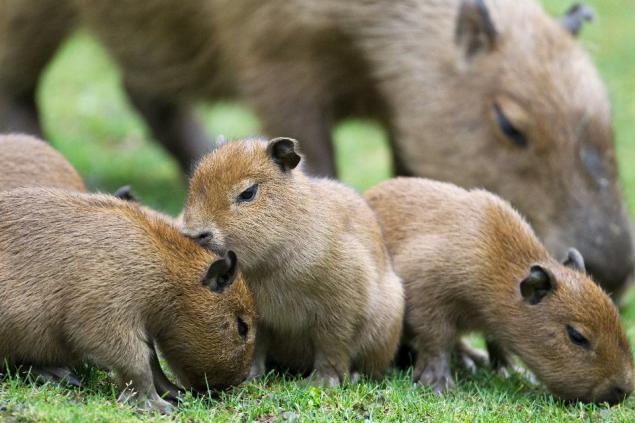
Conclusion
Guinea pigs are endearing and sociable creatures that come in a variety of breeds and sizes. While the average size of an blog adult guinea pig typically ranges from 8 to 10 inches in length and 1.5 to 2.5 pounds in weight, there are variations among different breeds and individual guinea pigs. Some breeds, like the Rex, can grow to be larger, with lengths of up to 17 inches. Regardless of their size, guinea pigs bring joy and companionship to countless families worldwide.
A guinea pig can also be influenced by factors such as genetics, nutrition, and overall care. Guinea pigs should receive a well-balanced diet, a comfortable living environment, and proper care to ensure they reach their full potential in terms of size and, more importantly, enjoy a healthy and happy life.
Whether small or large, guinea pigs are beloved pets cherished for their friendly personalities, gentle demeanor, and their ability to form strong bonds with their human caregivers. Understanding their size and growth patterns is essential for providing them with the love and care they deserve. Understanding the various factors that can influence guinea pig size, from breed and coat type to genetics and care, is essential for providing these delightful pets with the best possible life.

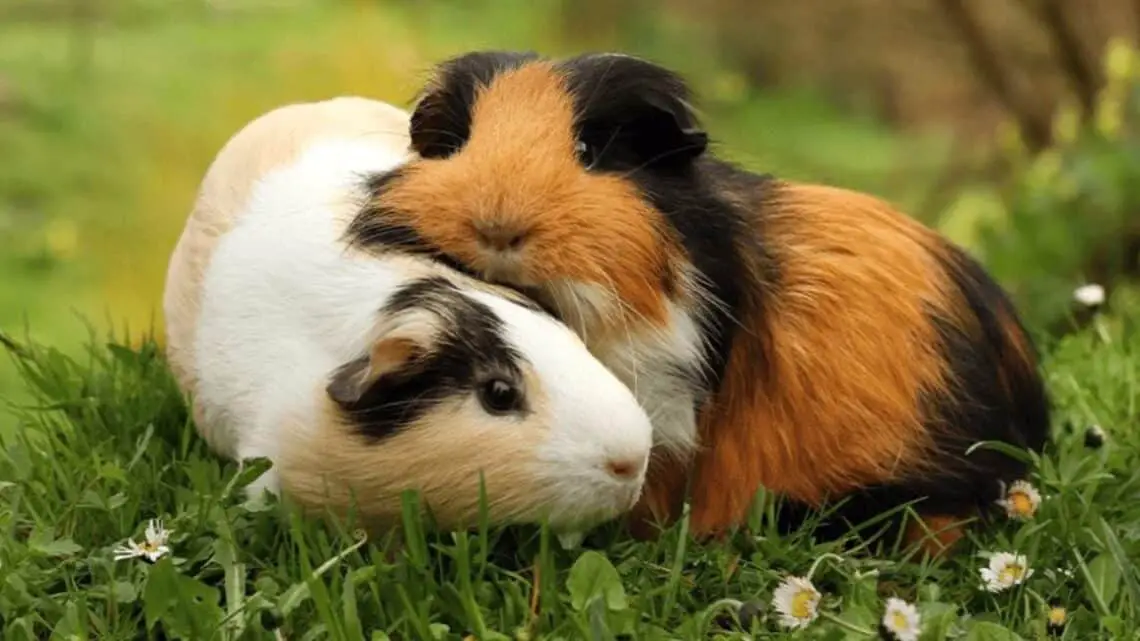

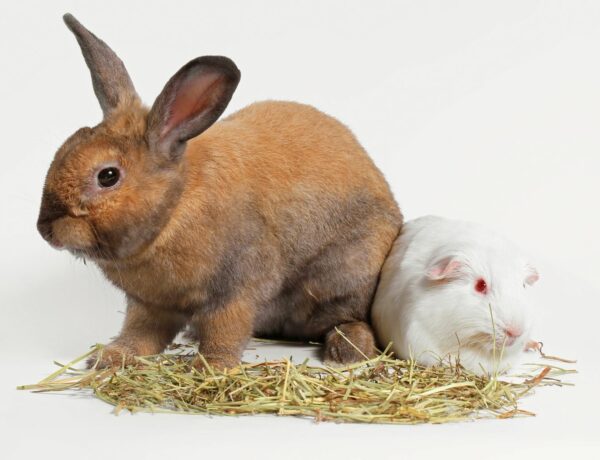
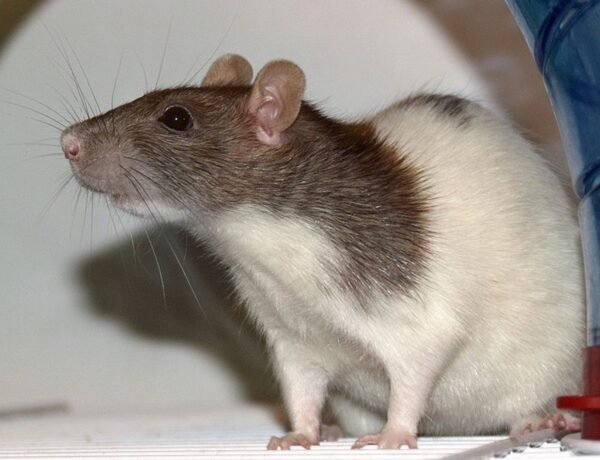
No Comments